|
Pictures of Melanoma
|
Large size
|
Most melanomas are at least 5 millimeters
(about 1/4 inch) across when they are found; many
are much larger. An unusually large mole may be melanoma.
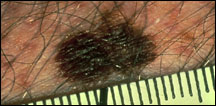
|
|
Many colors
|
A mixture of tan, brown, white, pink, red, gray, blue, and especially
black in a mole suggests melanoma.
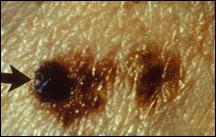
|
|
Irregular border
|
If a mole has an edge that is irregular or notched, it may be melanoma.
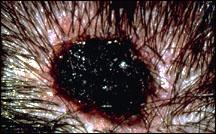
|
|
Abnormal surface
|
If a mole is scaly, flaky, oozing, or bleeding, has an open sore that does not heal, or has a
hard lump in it, it may be melanoma.
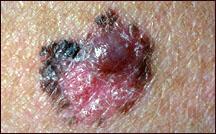
|
|
Unusual sensation
|
If a mole itches or is painful or tender, melanoma may be present.
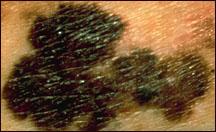
|
|
Abnormal skin around mole
|
If color from the mole spreads into the skin around it or if this skin becomes red or loses
its color (becomes white or gray), melanoma may be present.

|
 Back to Top Back to Top
< Previous Section | Next Section > |
